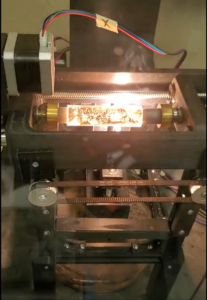
That’s the idea behind Flash Joule Heating, which the folks at my alma mater have been using for almost 4 years now. It’s the biggest breakthrough at Rice since the Buckyball, and it comes from the same lab, now run by James Tour.
Originally developed to create graphene, flash joule heating is also a way to recycle plastics and creates recoverable hydrogen as part of the process.
The method is simple. Grind up the plastic, add iron and charcoal for connectivity, and use an electric furnace to heat it very briefly to about 5,120 degrees Fahrenheit. The principle of the furnace is the same one used by the space heater in your bathroom.
It’s not recycling, turning plastic into another form of plastic. It’s upcycling, turning plastic into something completely different, and more valuable. It also uses 10% of the energy required for current carbon nanotube production and produces less than 10% as much carbon dioxide.
I’ve seen flash joule equipment priced at just $7,500. I presume that doing it on an industrial scale requires a bigger investment. But there are other industrial applications for this, like making better cement.
My concern is that Rice has always been slow to commercialize what comes out of the Tour lab. I once even lost my temper and called the lab a patent troll. Change my mind.










